Tag Archives Bees
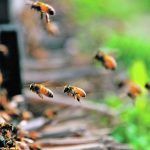
Imported sugar for domestic bees
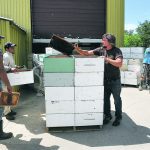
Beekeepers blocked from Japanese market
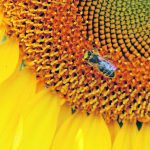
Beekeepers face soft market for honey
Honey buyers say they have sufficient supplies so they aren’t buying, but Western Canada hasn’t seen a good crop in years
Earlier this year and for parts of 2022, honey prices in Canada were close to $3 per pound. That’s a massive jump from a few years ago, when honey in Western Canada was selling for $1.30 to $1.40 per lb. Prices are still good, about $2.40 to $2.50 per lb. but no one knows the […] Read more
Sunflower pollen linked to bumble bee health
Researchers have determined that the tiny spines on sunflower pollen grains significantly reduce parasite infection
Sunflowers, along with more than 180,000 different plant species and more than 1,200 crops, rely on insect pollinators that contribute more than $200 billion in annual ecosystem services globally. At the dinner table, one-third of our food is thanks to the role of pollinating insects.
Honeybee producers offered help in Manitoba
The support provided by the federal and provincial governments comes after the sector suffered 57 percent winterkill
Last winter and spring were extremely difficult for Manitoba beekeepers. A combination of varroa mites, a cold winter and a delayed spring with three Colorado Low storms caused severe losses of honeybee colonies in the province. Data from the Canadian Association of Professional Apiculturists (CAPA) found that 57 percent of Manitoba bee colonies failed to […] Read more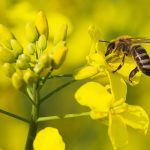
Recent rain helps bee producers hurt by dry conditions
Wildfire smoke has slowed the bees while the fires have forced animals such as bears into areas where hives are located
Prairie beekeepers facing dry conditions and wildfire smoke are welcoming recent rain as they deal with warmer weather that initially helped them after a cold start this spring. “It was getting extremely dry in certain areas,” said executive director Rod Scarlett of the Canadian Honey Council. “This is, just as I say, it’s kind of […] Read more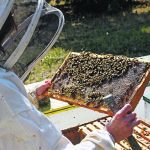
U.S. bees should be able to come north, say Americans

Varroa mite resistance to Apivar is increasing
Replacement products must be able to kill varroa mites without harming honeybees or affecting food safety for humans
Rod Scarlett, executive director of the Canadian Honey Council. “It is quite possible that the life expectancy of this particular chemical might only be a couple more years.”
Ottawa urged to improve how bee industry is regulated
MPs told CFIA should have experts on staff rather than relying on the Canadian Association of Professional Apiculturists
Beekeepers need a regulatory agency willing to work collaboratively with the industry and “rely on first-hand knowledge rather than hearsay, acknowledge industry and their expertise and respond in a timely manner.”



